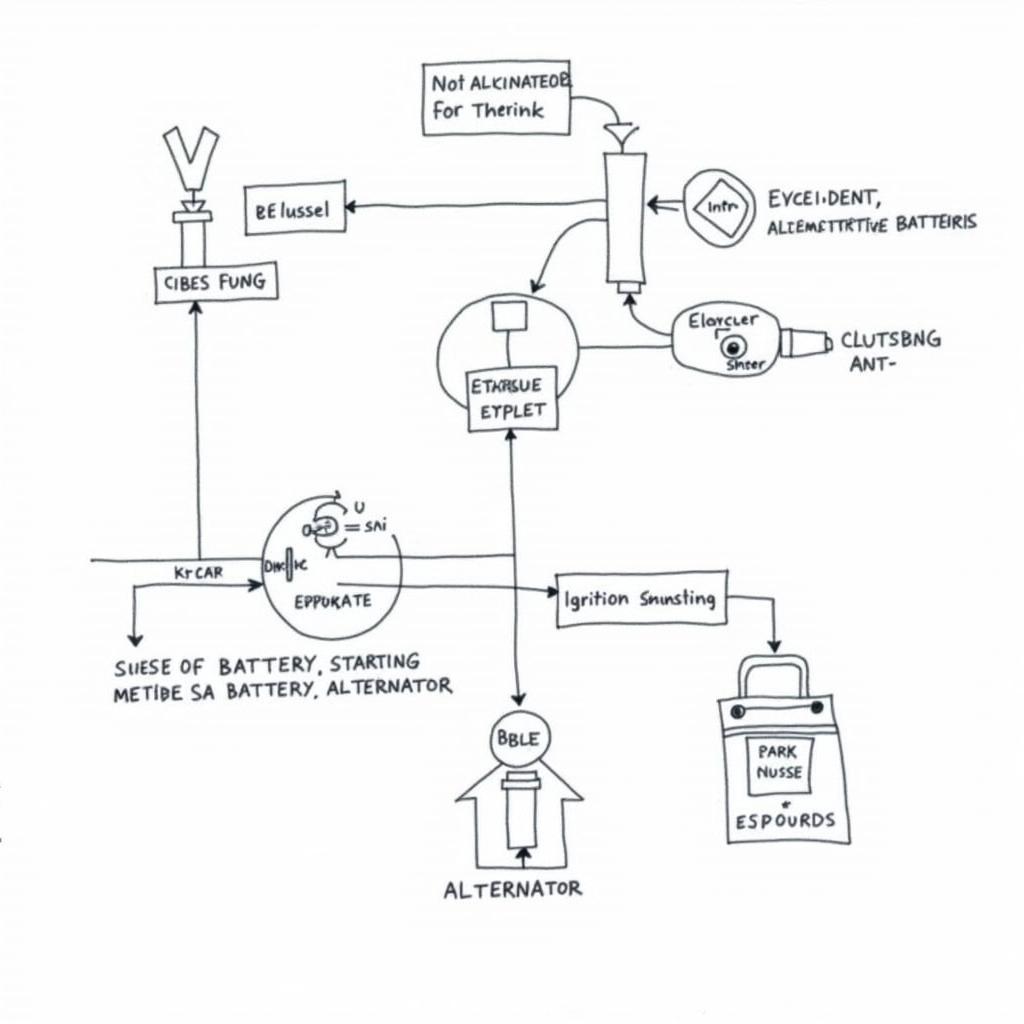Your car won’t start even with a jump? This frustrating situation can leave you stranded and searching for answers. We’ll explore the common reasons why your car might refuse to start even after a jump, offering practical troubleshooting steps and solutions to get you back on the road. Let’s dive in and get your car running smoothly again. Read our guide on jump starting a car that won’t start to ensure you are doing it correctly. jump start car not starting
Common Causes of a Car Not Starting After a Jump
There are several reasons why your car might still refuse to start even after receiving a jump. One of the most common culprits is a dead battery that is simply beyond resuscitation. Other possibilities include a faulty alternator, bad starter, corroded battery terminals, or even a problem with your car’s electrical system.
Dead Battery: Beyond a Jump Start
Sometimes, a battery is just too far gone, and a jump start won’t be enough. Internal damage or extreme age can render a battery incapable of holding a charge, even after a temporary boost.
Faulty Alternator: Not Charging Properly
A bad alternator can prevent your battery from charging properly. Even if a jump gets your car started, the alternator won’t replenish the battery, leading to repeated starting problems.
Bad Starter: The Engine Won’t Turn Over
A faulty starter can prevent the engine from cranking, even with sufficient power from the battery. You might hear a clicking sound when trying to start the car, indicating a starter issue.
Corroded Battery Terminals: Preventing Current Flow
Corroded battery terminals can disrupt the flow of electricity between the battery and the rest of the car’s electrical system, hindering the starting process even with a jump.
Electrical System Issues: Short Circuits and Other Problems
A short circuit or other electrical problems can drain your battery and make it difficult to start the car, even after a jump start. These issues often require more in-depth diagnosis and repair.
If your car still isn’t starting, even with jumper cables, you should investigate further. car not starting even with jumper cables
Troubleshooting Your Car’s Starting Problem
If your car isn’t starting after a jump, here’s a step-by-step guide to help you troubleshoot the issue:
-
Check the Battery Terminals: Inspect the battery terminals for corrosion. Clean them with a wire brush and baking soda solution if necessary.
-
Inspect the Jumper Cables: Ensure the jumper cables are properly connected and in good condition. Damaged or loose cables can prevent a successful jump start.
-
Test the Battery: Use a multimeter to test the battery voltage. A reading below 12.6 volts indicates a weak or dead battery.
-
Check the Alternator: With the engine running, use the multimeter to test the alternator output. A reading between 13.5 and 14.5 volts is typically normal.
-
Listen for the Starter: When attempting to start the car, listen for a clicking sound. This can indicate a bad starter.
-
Inspect Fuses and Relays: Check the fuses and relays related to the starting system. A blown fuse or faulty relay can prevent the car from starting.
Cold weather can severely impact your car’s battery. Find out more here: car battery low in cold weather
Solutions for a Car That Won’t Start After a Jump
Once you’ve identified the problem, here are some potential solutions:
-
Replace the Battery: If your battery is dead, replacing it is the most straightforward solution.
-
Repair or Replace the Alternator: A faulty alternator should be repaired or replaced to ensure proper battery charging.
-
Replace the Starter: A bad starter needs to be replaced to get your engine cranking again.
-
Clean or Replace Battery Cables: Corroded or damaged battery cables should be cleaned or replaced to restore proper current flow.
-
Address Electrical Issues: Consult a qualified mechanic to diagnose and repair any underlying electrical problems.
“A car not starting after a jump is often a sign of a deeper issue beyond a simple dead battery,” says Alex Johnson, Senior Automotive Electrical Engineer at Advanced Auto Diagnostics. “Proper diagnosis is crucial to identify the root cause and implement the correct solution.”
 Car Electrical System Diagram
Car Electrical System Diagram
Conclusion
A car not starting with jump can be a frustrating experience, but by understanding the common causes and following the troubleshooting steps outlined in this article, you can pinpoint the problem and get your car back on track. Don’t hesitate to seek professional help if you’re unsure about any aspect of the diagnostic or repair process. A dead key fob battery could also be the culprit. key battery dead car won t start Addressing the underlying issue will not only get your car started but also prevent future starting problems. How to tell if it is your battery or starter? bad battery vs bad starter
FAQ
-
Can a jump start damage my car? While rare, improper jump-starting techniques can potentially damage the car’s electrical system.
-
How long should I let the donor car run before attempting to start my car? Let the donor car run for a few minutes to help charge the dead battery.
-
What if my car still won’t start after multiple jump attempts? It’s likely a more serious issue than just a dead battery, and you should seek professional help.
-
How often should I replace my car battery? Typically, car batteries need replacement every 3 to 5 years.
-
What are the signs of a failing alternator? Dim headlights, flickering dashboard lights, and a whining noise from the engine can indicate a bad alternator.
-
How can I prevent battery corrosion? Regularly cleaning the battery terminals and applying a protective coating can help prevent corrosion.
-
Can extreme temperatures affect my car battery? Yes, both extreme heat and cold can significantly impact battery performance and lifespan.
